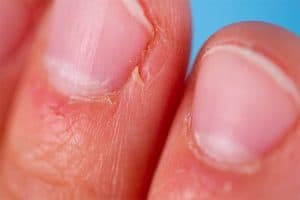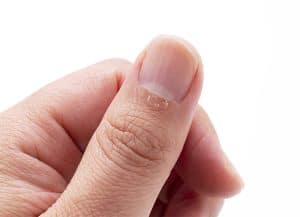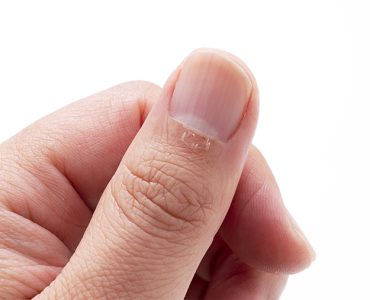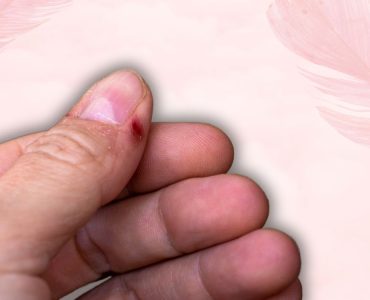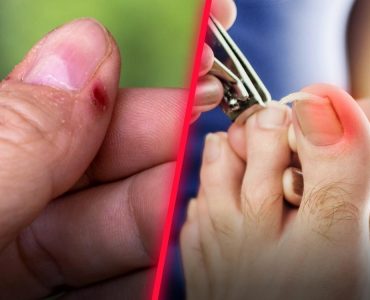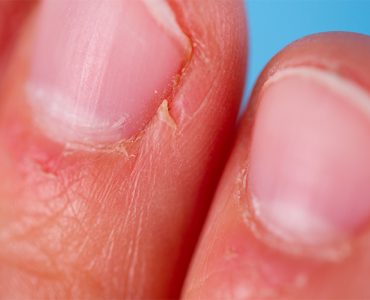Hangnails are those pesky little skin irritations that can cause significant discomfort and annoyance. We’ve all experienced them at some point, but have you ever wondered if there is a connection between the weather and the occurrence of hangnails? As it turns out, weather does play a role in the formation of hangnails, and understanding this relationship can help us prevent and manage them more effectively.
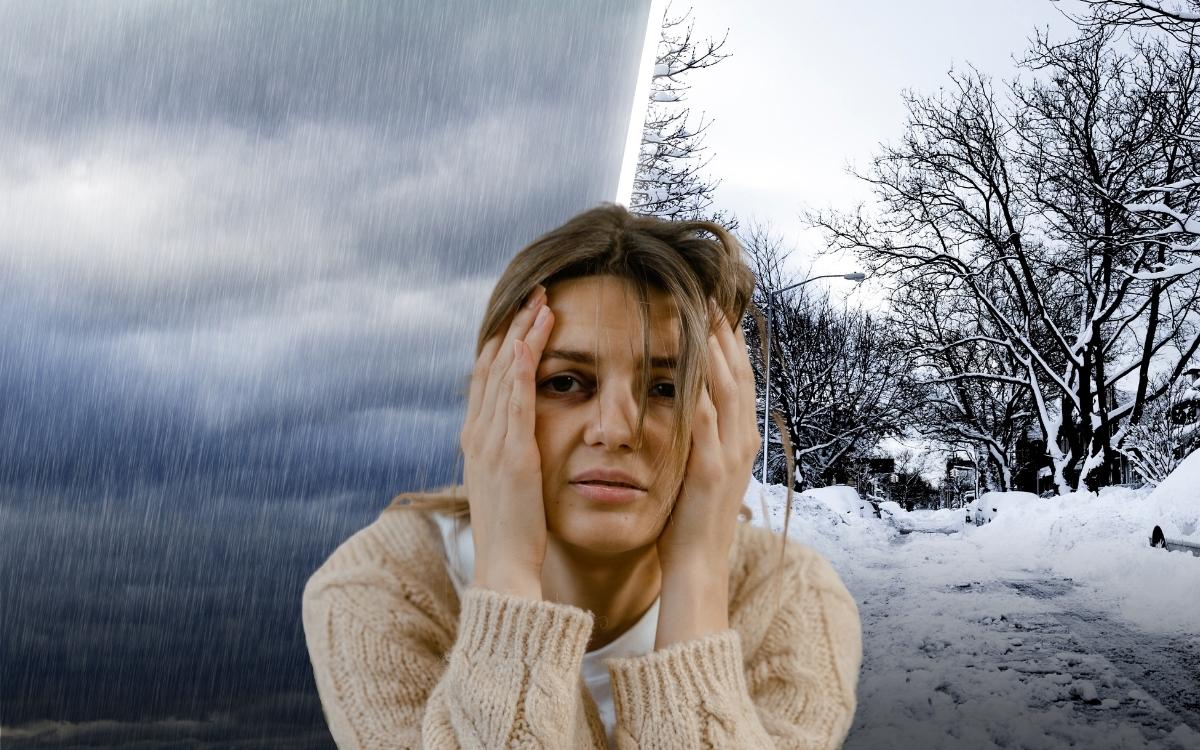
In this blog post, we’ll explore how different weather conditions, such as humidity, temperature, and seasonal changes, can impact the occurrence of hangnails. By gaining this knowledge, you’ll be equipped with valuable insights to keep your hands and nails healthy no matter the weather.
Weather and Hangnails: The Connection
Weather plays a significant role in the occurrence of hangnails. The changes in humidity, temperature, and seasonal variations can all have an impact on the health of our skin, including the vulnerability to developing hangnails. Let’s explore the connection between weather and hangnails in more detail.
The Impact of Humidity on The Skin
Humidity levels can greatly affect the moisture content of our skin. High humidity tends to create a more damp environment, which can lead to softening and weakening of the skin around the nails. This softening makes the skin more prone to tearing and increases the likelihood of hangnails forming. On the other hand, low humidity levels can cause excessive dryness, which can also contribute to the occurrence of hangnails.
High Humidity and Hangnails
During periods of high humidity, such as in tropical climates or during the summer season, the excess moisture in the air can make the skin around the nails soft and prone to tearing. The constant exposure to moisture can weaken the skin’s integrity and make it more susceptible to hangnail formation.
Low Humidity and Hangnails
Conversely, in environments with low humidity, such as during the winter season or in arid regions, the lack of moisture in the air can lead to dry skin. Dryness can cause the skin to become tight and brittle, making it more likely to crack and result in hangnails.
The Role of Temperature in Hangnail Occurrence
Temperature variations can also impact the occurrence of hangnails. Extreme temperatures, both hot and cold, can have specific effects on the skin and nails.
Cold Weather and Hangnails
In colder climates, cold weather can lead to decreased blood circulation in the extremities, including the fingers. The constriction of blood vessels can affect the delivery of essential nutrients and moisture to the nail bed, potentially leading to dryness and increased vulnerability to hangnails. Moreover, the combination of cold air outside and dry indoor heating can further deplete the moisture levels in the skin, exacerbating the risk of hangnails.
Read This Next:
Hot Weather and Hangnails
In hot weather, excessive sweating can be a contributing factor to the occurrence of hangnails. When sweat accumulates around the nails, it can soften the skin, making it more prone to tearing and hangnail formation. Additionally, prolonged sun exposure can cause sunburn, which can further damage and dry out the skin, increasing the risk of hangnails.
The Influence of Seasonal Changes on Hangnails
Seasonal changes, such as transitioning from winter to spring or summer to autumn, can also impact the occurrence of hangnails. Each season presents unique challenges for our skin and nails.
Winter and Hangnails
During the winter season, the combination of cold outdoor temperatures and dry indoor environments can wreak havoc on our skin. Frequent exposure to harsh, dry air can lead to increased dryness and dehydration, making the skin more susceptible to hangnails. Additionally, frequent handwashing to prevent colds and flu can strip the skin of its natural oils, further exacerbating the risk of hangnails.
Summer and Hangnails
Summer brings its own set of challenges to our skin and nails. Excessive sun exposure can cause skin damage and dryness, increasing the likelihood of hangnail formation. Moreover, spending time in chlorinated pools or saltwater can further dehydrate the skin, making it more prone to hangnails.
Dryness and Hangnails
Dryness is a common culprit when it comes to the occurrence of hangnails. When our skin lacks proper moisture, it becomes more susceptible to cracking and tearing, leading to the formation of hangnails. Let’s delve into the relationship between dryness and hangnails and explore preventive measures to combat this issue.
The Relationship Between Dry Skin and Hangnails
Dry skin lacks the necessary moisture and natural oils that help maintain its suppleness and flexibility. Without proper hydration, the skin becomes dry, tight, and more prone to developing hangnails. When the skin around the nails becomes dehydrated, it loses its elasticity and can easily tear or crack, resulting in the formation of hangnails.
The Effect of Dry Weather on Hangnail Formation
Dry weather conditions, such as those experienced during winter or in arid climates, can exacerbate the problem of dry skin and increase the occurrence of hangnails. In these conditions, the already low moisture content in the air is further depleted, leading to increased moisture loss from the skin. The lack of humidity can cause the skin to become parched, making it more susceptible to developing hangnails.
Preventive Measures to Combat Dryness-Related Hangnails
Proper Moisturization Techniques
One of the key ways to combat dryness-related hangnails is by adopting a regular moisturization routine. Applying moisturizers to the skin around the nails helps replenish lost moisture and nourishes the skin, reducing the risk of hangnails. Look for moisturizers that contain emollients, humectants, and occlusives to lock in moisture and create a protective barrier on the skin.
Choosing the Right Moisturizers
When selecting moisturizers, opt for products that are specifically formulated for dry skin. Thick, creamy formulations that provide long-lasting hydration are ideal. Ingredients like shea butter, glycerin, hyaluronic acid, and ceramides can help restore and retain moisture in the skin. Apply moisturizer to the hands and nails after washing or whenever the skin feels dry to maintain optimal hydration levels and prevent hangnails.
Avoiding Excessive Handwashing
Frequent handwashing is crucial for maintaining proper hygiene, but excessive washing can strip the skin of its natural oils, exacerbating dryness and increasing the likelihood of hangnails. Whenever possible, use lukewarm water instead of hot water and choose mild, moisturizing soaps. After washing, pat your hands dry with a soft towel rather than rubbing vigorously, and immediately follow up with moisturizer to seal in the moisture.
Humidity and Hangnails
Humidity levels play a significant role in the occurrence of hangnails. Both high and low humidity can affect the skin’s moisture balance, making it more susceptible to hangnail formation. Let’s explore the relationship between humidity and hangnails and understand how to navigate its impact.
The Impact of High Humidity on Hangnails
Excessive Moisture and Hangnails
In environments with high humidity, such as tropical regions or during the summer season, the air is saturated with moisture. This excess moisture can soften the skin around the nails, making it more vulnerable to tearing and hangnail formation. The prolonged exposure to dampness can weaken the skin’s structure, increasing the chances of hangnails.
Fungal and Bacterial Infections
High humidity can create an environment conducive to the growth of fungi and bacteria. These microorganisms thrive in warm, moist conditions and can infect the skin around the nails. Fungal and bacterial infections can further aggravate the occurrence of hangnails, as they cause inflammation and damage to the nail bed and surrounding tissues.
The Effects of Low Humidity on Hangnails
Dehydration and Hangnails
Low humidity levels, commonly experienced during the winter season or in arid climates, can cause dehydration of the skin. In such dry environments, moisture evaporates quickly from the skin’s surface, leading to decreased hydration levels. Dehydrated skin becomes dry, tight, and more prone to cracking and developing hangnails.
Cracked Skin and Hangnails
Low humidity can also contribute to the formation of hangnails through the development of cracked skin. When the skin lacks sufficient moisture, it loses its elasticity and becomes more susceptible to developing small fissures. These cracks can occur around the nails, making the skin prone to tearing and resulting in hangnails.
Understanding the effects of humidity on hangnails is crucial for managing their occurrence effectively. Balancing the moisture levels in your skin is key to preventing hangnails caused by both high and low humidity conditions.
Read This Next:
To address the impact of high humidity:
- Keep the skin around the nails clean and dry.
- Use moisture-wicking materials for gloves or footwear to reduce moisture accumulation.
- Avoid excessive exposure to humid environments or activities that cause prolonged dampness, such as swimming or working in wet conditions.
To combat the effects of low humidity:
- Use a humidifier indoors to increase moisture levels.
- Apply a rich moisturizer or hand cream regularly to keep the skin hydrated.
- Wear gloves when going outside in cold, dry weather to protect the skin from harsh elements.
Temperature Extremes and Hangnails
Temperature extremes, both hot and cold, can have specific effects on the occurrence of hangnails. The impact of these extremes on the skin and nails can lead to increased vulnerability to hangnail formation. Let’s explore the relationship between temperature and hangnails and understand how to navigate its effects.
The Influence of Cold Weather on Hangnails
Constriction of Blood Vessels and Hangnails
In colder climates or during winter seasons, cold weather can lead to the constriction of blood vessels in the extremities, including the fingers. This constriction reduces blood flow to the nails and surrounding tissues, impacting their health. Insufficient blood supply can result in dryness, brittleness, and increased vulnerability to hangnails.
Decreased Natural Oil Production
Cold weather can also affect the production of natural oils in the skin. Sebaceous glands, responsible for producing these oils, tend to be less active in colder temperatures. As a result, the skin around the nails may experience a decrease in natural lubrication, leading to dryness and an increased risk of hangnails.
The Effects of Hot Weather on Hangnails
Sweating and Hangnails
Hot weather often leads to increased sweating, especially in regions with high temperatures or during the summer season. Excessive sweating can soften the skin around the nails, making it more prone to tearing and hangnail formation. The constant exposure to moisture can weaken the skin’s integrity and increase the likelihood of hangnails.
Sunburn and Hangnails
Prolonged exposure to the sun’s harmful UV rays can cause sunburn, which not only damages the skin but also dries it out. Sunburned skin becomes dry, tight, and more susceptible to cracking, resulting in hangnails. It is essential to protect your hands from the sun’s rays by using sunscreen and wearing appropriate clothing or accessories.
Conclusion
In conclusion, the occurrence of hangnails can be influenced by various weather conditions. Whether it’s the dryness of winter, the humidity of summer, or the extremes of hot or cold weather, our skin reacts to these changes, and hangnails can be a result.
However, armed with this knowledge, you can take proactive measures to prevent and manage hangnails effectively. Remember to keep your hands moisturized, protect them from harsh weather conditions, and maintain proper nail care. By following these steps, you can reduce the occurrence of hangnails and keep your hands looking and feeling their best all year round.


